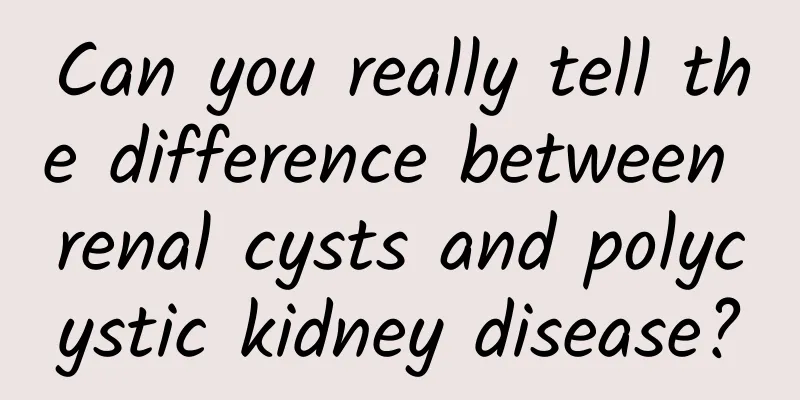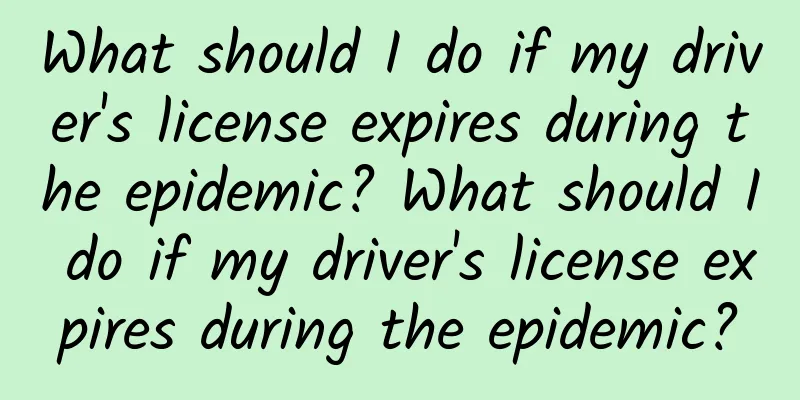Can you really tell the difference between renal cysts and polycystic kidney disease?

|
Although both renal cysts and polycystic kidney disease are cystic diseases of the kidney, they differ in many aspects, such as etiology, clinical manifestations, imaging examinations and treatment methods. The following is a detailed introduction to help you distinguish between the two diseases. Causes Renal cyst: The cause of simple renal cyst is not very clear, it may be related to factors such as renal tubular diverticula and aging. With age, renal tubular diverticula will gradually increase and then develop into renal cysts. In addition, some renal cysts may be related to genetic factors, but they are not the main cause. Polycystic kidney disease: Polycystic kidney disease is a hereditary disease, which is divided into autosomal dominant polycystic kidney disease (ADPKD) and autosomal recessive polycystic kidney disease (ARPKD). ADPKD is more common, usually inherited from parents to children, and the patient has disease-causing genes on both chromosomes; ARPKD is relatively rare, often occurring in infancy and is often more severe. Clinical manifestations Renal cyst: Simple renal cysts grow slowly. Small cysts usually have no obvious symptoms and are often found accidentally during physical examinations or examinations for other diseases. When the cyst is large, it may compress the surrounding tissues, causing soreness and pain in the waist, or cause hematuria, proteinuria, etc. Generally speaking, simple renal cysts will not affect renal function. Only when complications such as cyst rupture and infection occur will it have a certain impact on renal function. Polycystic kidney disease: ADPKD patients usually have no symptoms in childhood. As they age, the cysts will gradually increase in size and number, and both kidneys will be covered with cysts of varying sizes, which will affect the structure and function of the kidneys. Patients often experience symptoms such as low back pain, hematuria, proteinuria, and hypertension. They may also be accompanied by a gradual decline in renal function and eventually develop into renal failure. In addition, patients with polycystic kidney disease may also have extrarenal manifestations such as liver cysts and pancreatic cysts, as well as complications such as intracranial aneurysms. ARPKD patients will develop severe kidney and liver lesions after birth or in childhood, such as abdominal masses, renal failure, liver fibrosis, etc. The disease progresses rapidly and the prognosis is poor. Imaging tests Renal cyst: Ultrasound examination is a common method for diagnosing renal cysts, which are manifested as single or multiple round or oval anechoic areas in the kidney with clear boundaries and enhanced echoes in the back. CT examination can more accurately show the size, location, shape and relationship of the cyst with surrounding tissues. The cyst usually presents uniform low density and no enhancement is observed in enhanced scanning. Polycystic kidney disease: Ultrasound examination shows that the kidneys are enlarged on both sides, and the renal parenchyma is full of cysts of varying sizes, showing honeycomb or sponge-like changes. CT examination can clearly show multiple cysts of varying sizes in both kidneys, some of which may have bleeding, calcification, etc. As the disease progresses, the normal structure of the kidneys is destroyed and renal function is gradually impaired. treat Renal cyst: For small asymptomatic cysts, special treatment is generally not required. Regular ultrasound or CT scans are sufficient to observe changes in the cyst. When the cyst is large, with a diameter exceeding 5 cm, or when compression symptoms or complications occur, treatment can be considered. Treatment methods include cyst puncture and fluid extraction with injection of sclerosant, laparoscopic cyst decompression, etc. These treatments can usually relieve symptoms and improve the patient's quality of life, and generally do not cause serious effects on renal function. Polycystic kidney disease: There is currently no specific treatment that can prevent the progression of polycystic kidney disease. Treatment is mainly aimed at complications, such as controlling high blood pressure, preventing and treating urinary tract infections, and dealing with hematuria. For patients with end-stage renal failure, dialysis or kidney transplantation is required. At the same time, patients need to pay attention to dietary adjustments in their daily lives and avoid strenuous exercise to reduce the risk of cyst rupture. There are obvious differences between renal cysts and polycystic kidney disease in many aspects. If you or someone close to you finds cystic lesions in the kidney, you should seek medical attention immediately, get a clear diagnosis through detailed examinations, and receive standardized treatment and management under the guidance of a doctor. |
<<: Can't tell the difference between common kidney diseases? This article will help you understand!
>>: Is kidney disease hereditary? You need to know this!
Recommend
Lower abdominal pain when turning over while sleeping during pregnancy
Many pregnant mothers have no experience, and if ...
Could Ovulation Testing Increase Your Chances of Pregnancy?
Believe it or not, the time each month when you a...
Say no to "cervical cancer"! The "three steps" of cervical cancer screening are the "guardian angel" of your health!
According to experts from Yiyang Central Hospital...
Can a girl’s Adam’s apple be removed?
We all learned biology when we were in school. Th...
Is it really good for pregnant women to drink purified water for a long time?
Once a woman becomes pregnant, her diet and daily...
Can I eat garlic after having an abortion?
No matter what factors cause abortion, once this ...
Does privacy film really hurt your eyes?
A few days ago, a netizen said on Weibo that he h...
A woman dreams of escaping successfully
Sometimes we sleep for a long time, but when we w...
What to do if the endometrium is thick
Thick endometrium is a common symptom that can oc...
Is it good to be honest in the workplace? How to be good at speaking?
We often say that "honest advice is unpleasa...
Is acne caused by menstruation or pregnancy?
Acne is a common symptom, which may be related to...
Toothache is not a disease, but when it hurts... is it a heart attack?
Review expert: Wang Xin, deputy chief physician o...
Vulvar pimples and their treatment
Vulvar pimples may be accompanied by pain, and it...
Will endometrial polyps go away on their own?
In today's society, a large number of young f...
How to treat breast hyperplasia better
Breast hyperplasia is a common disease for women,...









